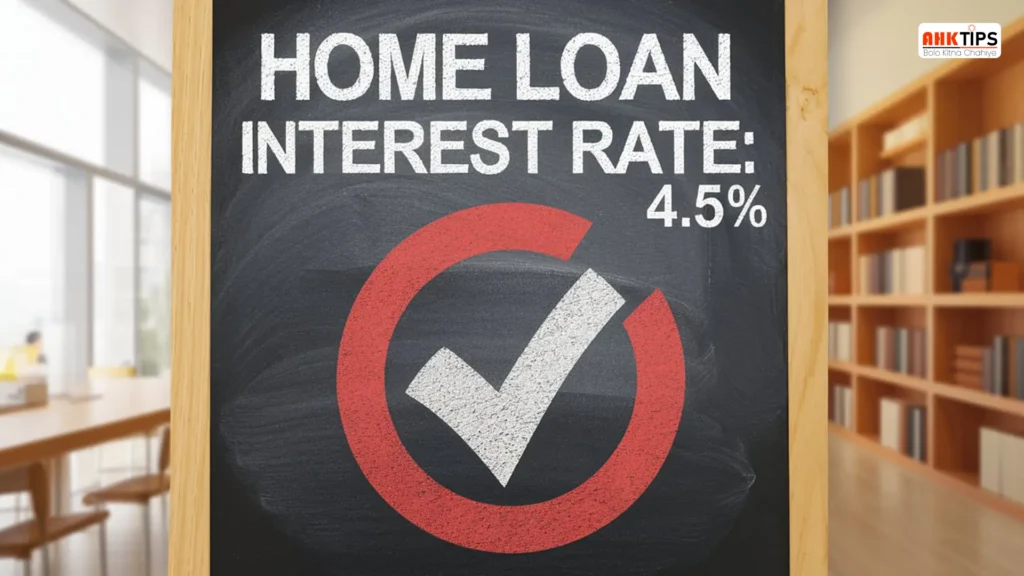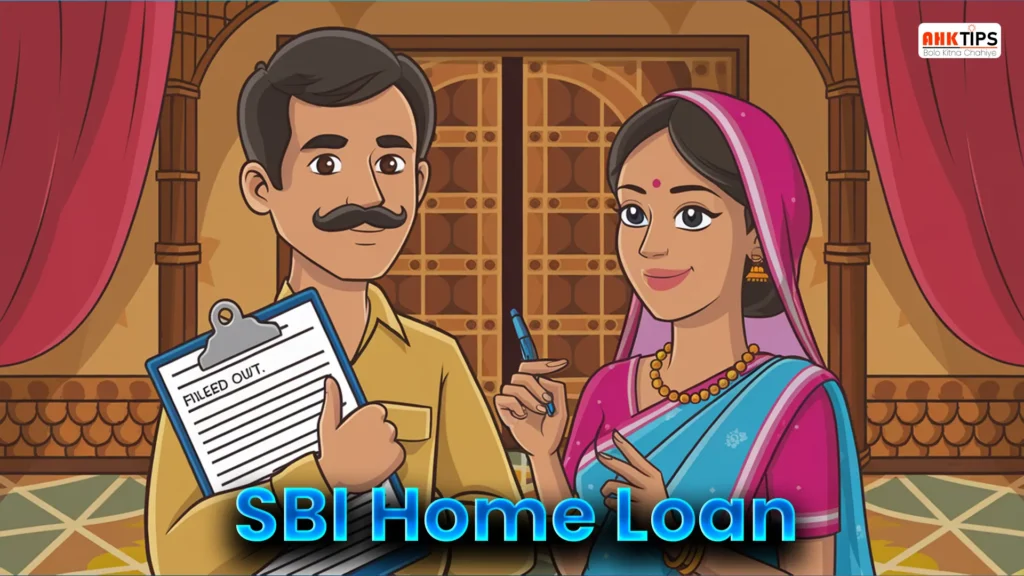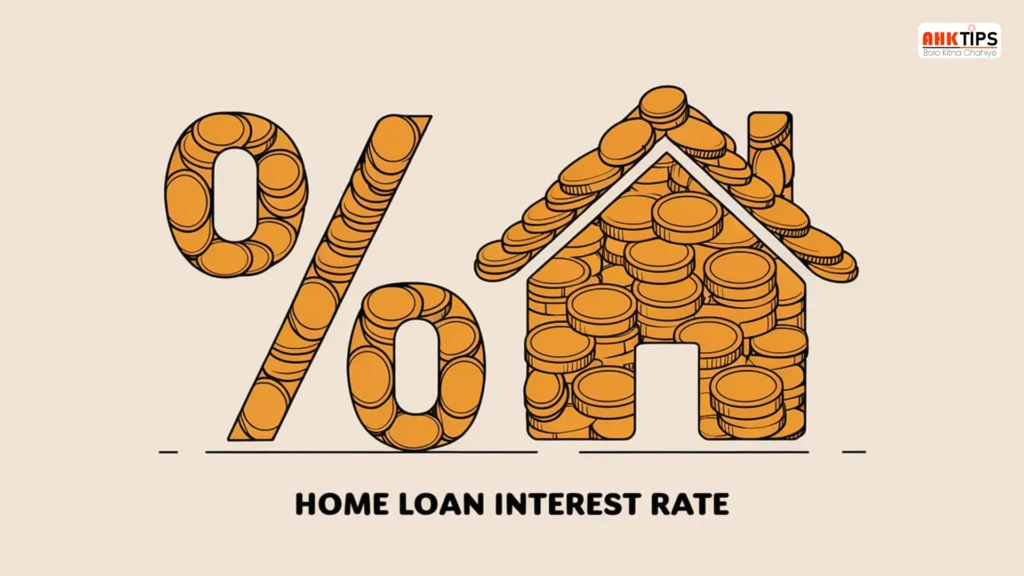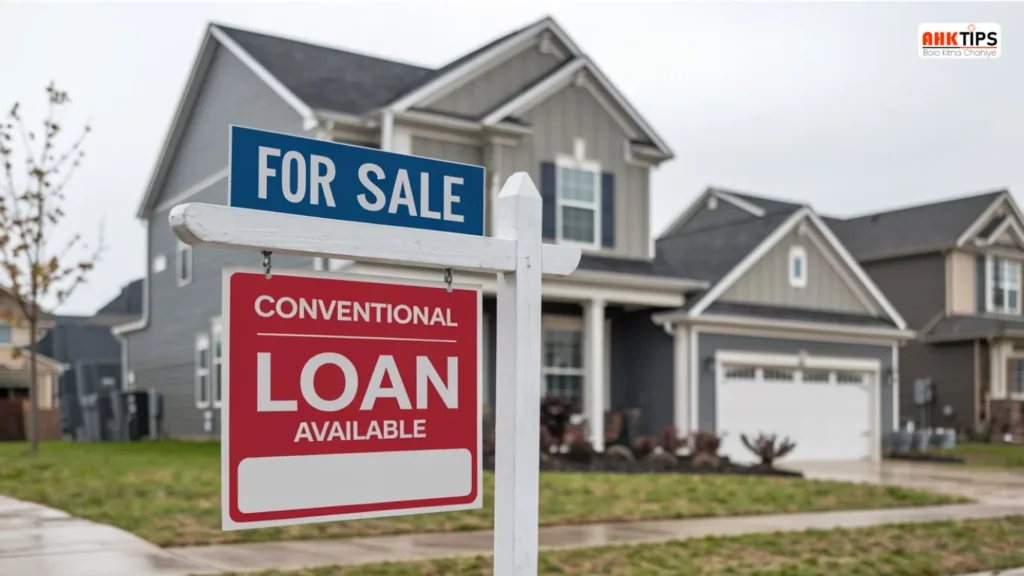Summary
This article explains everything you need to know about home loan settlement. It addresses when banks allow settlements, who is qualified, the documentation you need, and how to apply for a settlement. It also explains how, should you be facing financial problems, negotiating with your bank can help reduce your responsibilities. Approaching your bank should be done with honesty, clarity, and preparation, emphasised throughout the text. It demonstrates how thorough negotiations, a clear application, and correct documentation may help to smooth out the process. This book provides useful advice to effectively and stress-free end your mortgage early, regardless of your payment difficulties or just your desire to do so. If you handle things correctly, you will reach a reasonable compromise with your bank.
Introduction
Securing a home loan is an important decision when you find it hard to pay back your dues. Sometimes, a change in income, health problems, or financial difficulties makes it difficult to keep payments ongoing. This is where house loan settlement finds application. It closes your account with the bank by allowing you to pay back a lump sum rather than the whole amount. Not everyone qualifies for this, though, and first, you must satisfy certain requirements, including documentation. This is a procedure that calls for thorough planning, open communication, and a ready-made negotiating attitude. From criteria and documentation to negotiating and asking for a settlement, this article will clearly and simply outline all the main elements of house loan settlement.
Understand Your Home Loan Settlement Eligibility
In extraordinary circumstances, when the borrower cannot pay back the loan, banks provide a financial alternative called home loan settlement. Not every borrower, nevertheless, is eligible for this relief. Knowing the house loan settlement eligibility rules established by lenders is crucial before you weigh this path.
This page will let you evaluate if you fit the requirements for a settlement request.
What Is Home Loan Settlement?
Settlement of a home loan is the process by which the bank closes the loan account after consent to accept a smaller lump-sum payment from the borrower. This is not the same as loan closure. A settled debt is one in which the entire payback was not made; a closed loan is one paid as scheduled.
Your credit score suffers when the bank notes such accounts as “settled” in credit records. Therefore, banks allow settlements under specific circumstances only.
Who Is Eligible for Home Loan Settlement?
Genuine Financial Hardship
A documented inability to pay back the loan is one of the most crucial requirements for home loan settlement eligibility.
To bolster your claim, you have to be able to offer official documentation, including income certificates, termination letters, or medical data.
Long-Term Non-Payment of EMIs
Those who have not paid their EMIs for a long period and have been sent several reminders or legal notifications could be eligible for settlement. Under such circumstances, banks view settlement as a last resort meant to ensure at least partial loan recovery.
Should the procedure of recovery fail and the bank find no other answer, it could consider a settlement demand.
Property with Low Recovery Value
Should the value of the mortgaged property decline, and it seems doubtful the bank could recoup the whole amount at auction, they might think about settling. This usually relates to places where the property is under legal dispute or the real estate market has collapsed.
Lack of Legal Heirs or Willing Co-Borrowers
Should the main borrower die and no legal heirs be ready or able to pay back the loan, the bank could look at settlement. This is particularly pertinent in cases where guarantors or co-borrowers are dead, untraceable, or financially incompetent.
Willingness to Pay a Lump Sum
Only if the borrower or their family can provide a lump-sum payment that meets the criteria will banks agree to a settlement. Making this one-time payment fast is a major component of home loan settlement eligibility.
The offer has to seem better than the expense of running ongoing legal recovery operations for the bank.
Factors That Affect Eligibility
Loan Repayment History
Should you have records of inconsistent or late payments, the bank might be more receptive to talking about a settlement. They might delay or refuse the request, though, if you were routinely paying and then stopped without explaining.
Transparency and Communication
Those who reveal full financial records and open communication with the bank are more likely to be taken into consideration as borrowers. Avoiding the bank or hiding facts could compromise your prospects.
Internal Bank Policies
Every bank has a policy about settlements. While some people follow rigid guidelines, others evaluate situations more loosely. Approval depends on risk assessment, recovery goals, and the evaluation team of the bank.
Gather All Required Documents for Home Loan Settlement
Closing a home loan depends on having the correct papers on hand. Whether you are moving to another lender or paying back the whole loan, the process consists of numerous crucial phases. Arranging all the documentation for home loan settlement is among the most crucial components. This documentation guarantees a seamless transfer of property rights or release of collateral and helps show the loan is paid off.
Why Are Home Loan Settlement Documents Important?
It’s crucial to know why the papers are relevant before getting into the list. They operate as evidence that:
- You’ve paid the loan completely
- The lender loses rights over your property now.
- Your credit standing is still excellent.
Should any necessary paperwork be absent, the closing procedure may be delayed, and even future loan approvals may suffer.
Essential Documents for Home Loan Settlement
You must gather several legal and financial records when ready to pay off your house loan. Usually, these are turned over to our lender or bank.
Home Loan Account Statement
This comprehensive record of all your home loan-related transactions is It covers expenditures, repayments, interest, and penalties, should any exist. Before starting the settlement procedure, it is essential to confirm that every debt is paid off.
Loan Agreement Copy
One needs to have the original loan agreement signed when one is borrowing. It lists every term and condition both sides decided upon. This paperwork also facilitates cross-verification of specifics during closing.
No Objection Certificate (NOC)
Among the most crucial files for home loan settlement is the No Objection Certificate. It is sent by the lender whenever the loan is paid off totally. The NOC certifies that the borrower has paid all debts and that the lender has no more rights on the real estate.
Foreclosure Letter or Loan Closure Letter
Should you be pre-closing your loan, the bank’s foreclosure letter indicates that the loan has been paid up completely before the term runs out. A conventional loan closure letter is sent if the loan has run its term.
Original Property Documents
Most banks retain as collateral the original selling deed, title deed, and other property paperwork during the loan term. This paperwork is returned to the borrower following loan settlement. Make sure every page is intact and present always.
Encumbrance Certificate
This certificate indicates that loans or legal obligations against the property do not exist. Usually, it comes from the local registration office following loan repayment. Many lenders help with this, particularly with final documents.
Post-Dated Cheques and ECS Cancellation
Make sure you gather and cancel post-dated cheques or Electronic Clearance Service (ECS) instructions for EMI payments once the loan closes. This guarantees that no more funds are wrongly handled.
Identity and Address Proof
Carry a current ID and address proof, such as a passport, PAN card, or Aadhar card, to confirm your identification throughout the settlement procedure. Usually, these are needed at the bank when signing the last papers.
Final Tips for Smooth Document Collection
View Your Bank’s Document Checklist here.
Various lenders could have somewhat varied requirements. To be sure you’re not missing anything, always review the official checklist provided by your lending company or bank.
Verify Returned Documents
Match the actual property papers you get with the list provided at loan approval. They will be needed for resale or future loans, hence keep them securely.
Having all the necessary paperwork for house loan settlement enables one to finish the process fast and with the least difficulty. Always save digital as well as physical copies for future use.
How to Write a Home Loan Settlement Application to Your Bank
Writing a good home loan settlement application is crucial, whether you wish to cancel your house loan account by paying the outstanding amount. This application formally tells your bank you intend to pay off the loan and initiates the required closure procedure. A well-written application speeds up the settling process and helps to eliminate uncertainty.
What is a Home Loan Settlement Application?
A formal request to the lender asking for loan account closure made by the borrower is known as a home loan settlement application. Usually, it covers specifics including borrower identity, loan account number, outstanding loan amount, and intended settlement date. This paper serves as evidence of your intention to end the account and fully pay back the loan.
Key Components of a Home Loan Settlement Application
Clearly and succinctly writing an application increases your chances of speedy processing. Your home loan settlement application should have most of these components.
Borrower Details and Loan Information
Talk first about your complete name, address, and phone number. Clearly say your loan account number, the address of the property, and other pertinent information, including the initial loan amount and sanction date. This clarifies for the bank your account so it may be identified without error.
Statement of Intent to Settle the Loan
Tell the bank you want to pay your house loan in whole and ask for the settlement figure and process. If any, mention the desired date you would want to finish the settlement process on.
Request for Settlement Statement
Ask the bank to provide the precise outstanding amount, together with the principal, interest, prepayment penalties, or any additional costs. This will enable you to confirm the last figure needed to finalise the loan.
Offer of Payment Mode
Tell the bank which check, demand draft, or electronic transfer you would want to pay for the settlement amount. This guarantees flawless coordination for the payment mechanism.
Request for No Objection Certificate (NOC)
Ask the bank to print the No Objection Certificate when the settlement is finalised. The lender has no rights on your property, and the NOC attests to the loan being fully repaid.
Closing Statement and Contact Information
Thank the bank for their cooperation to end the application; then, once again, provide your contact information for any clarifications or correspondence.
Sample Format of a Home Loan Settlement Application
Here is a simple format you can follow when writing your application:
Your Name
Your Address
Date
To
The Branch Manager
[Bank Name]
[Branch Address]
Subject: Home Loan Settlement Application
Dear Sir/Madam,
I am writing to request the settlement of my home loan account number [Your Loan Account Number]. I intend to pay the full outstanding amount to close the loan account at the earliest.
Kindly provide me with the final settlement statement, including all applicable charges and interest, so I can arrange the payment accordingly. Please also inform me about the procedure and documents required for completing the settlement process.
I plan to make the payment by [mention your expected date]. Your assistance in this regard will be highly appreciated.
Thank you for your support.
Sincerely,
[Your Name]
[Your Contact Number]
Tips for a Successful Home Loan Settlement Application
Be Clear and Concise
Your application should be simple and direct. Steer clear of extraneous information to guarantee the bank will swiftly grasp your need.
Keep a Copy
Always save a copy of the turned-in application for your records. This prepares one for potential conflicts or follow-up.
Follow Up Regularly
Follow up with the bank to verify receipt and find out the state of your settlement request following submission. This will guarantee fast processing.
Starting the process of smoothly settling your loan is writing a precise and strong home loan settlement application. The process can be hassle-free and quicker if one uses the correct structure and adds all required elements.
Approach to Negotiating Home Loan Settlement
Negotiating a home loan settlement could be a key initial step, whether you want to save money or negotiate better terms upon early loan closure. Your knowledge of the process and your capacity to engage with your bank will determine if you can reach a reasonable agreement on the last payment amount. The primary concepts and guidance in this book will enable you to negotiate a home loan settlement without problems.
What Does Negotiating Home Loan Settlement Mean?
Negotiating house loan settlement includes discussing and requesting a change or cut in the general loan account closure required overall amount. This can call for a reduction in prepayment charges, a waiver of some penalties, or reevaluation of interest on the existing debt. Good negotiating will help you reduce your financial load and simplify loan closure.
Steps to Negotiate Your Home Loan Settlement Amount
Gather Your Loan Documents and Information
Before beginning any negotiations, gather all relevant records, including your loan agreement, most current statements, and details on your outstanding debt. Making a good request will depend on understanding your exact pay-off amount and terms.
Understand Your Bank’s Policies
Banks vary in early settlement, prepayment penalties, and interest computation guidelines. Closely check your loan agreement or call a bank advisor to fully understand these terms. Negotiating from a stronger position depends on knowing which expenses are negotiable or waived.
Prepare Your Request Clearly
Tell your bank exactly what you want to bargain for. This could call for asking for a smaller settlement amount or a remission of foreclosure fees. Tell the bank your kind explanations for a long-term relationship or financial hardship.
How to Approach the Bank for Negotiation
Contact the Right Person
Visit the branch manager or loan officer assigned to handle your account. These authorities can review your request or escalate it for approval.
Use Written Communication
First, start with an official written or email request. This helps the bank closely review your case and notes your efforts in discussions. Note in your letter your loan account details, your intentions to settle, and the specific conditions you want to negotiate on.
Be professional and courteous.
Keep your approach civil and businesslike. Good treatment of others will help banks see your proposal favorably.
Sample Points to Include in Your Negotiation Request
- Request a careful analysis of the settlement value to know all the charges.
- Ask for a waiver or reduced prepayment penalty, or foreclosure penalty.
- Request an interesting review of the outstanding principle.
- Stress your good record of prompt payments or a close relationship with the bank.
- Indicate whether you are ready to pay the whole amount straight away, following the terms of the agreement.
Benefits of Negotiating Home Loan Settlement
Negotiating your home loan settlement could save you a lot of money, especially if your loan has significant prepayment penalties or interest charges. It also makes clear the last figure, thereby directing you away from shocks. Sometimes banks will offer incentives or discounts to complete loans early, especially if you have been a regular client.
Tips for Successful Negotiation
- Find out how your bank and competitors usually handle claims to bolster your case.
- If you want concessions, be prepared to honestly describe your financial situation.
- Stay patient and follow up regularly but politely.
- Should negotiations seem difficult, consider engaging a financial consultant.
- Always have any terms decided upon in writing before making the last payment.
Conclusion
If you’re in financial problems and unable to make your payments, settling on a house loan can be a good solution. It releases you from future payments by allowing you to end your account and pay your debts lump sum. Though this is not automatic, you still have to be eligible, send relevant papers, and have open, honest contact with your bank. Making this process smooth and less stressful will depend on your knowledge of the criteria, application of the method, and polite and straightforward negotiations. By easing financial stress and allowing you to go forward free from ongoing obligations, settling a house loan could offer a fresh start. Always seek accurate information and follow all the necessary protocols to avoid issues.
FAQ’s
Ans: Settlement of a house loan is completing your loan with a lump sum instead of the whole amount owed. It helps you to pay off debt and ease financial anxiety.
Ans: Candidates could be borrowers dealing with financial difficulties, health problems, unemployment, or permanent. Banks give these cases individual thought.
Ans: Important paperwork includes your original property records, NOC, foreclosure letter, account statement, and ID evidence. These enable your application to go without any problems.
Ans: Negotiating might help you discover a repayment schedule that fits you, cut the sum payable, or lessen penalties. The key is open contact with your bank.













